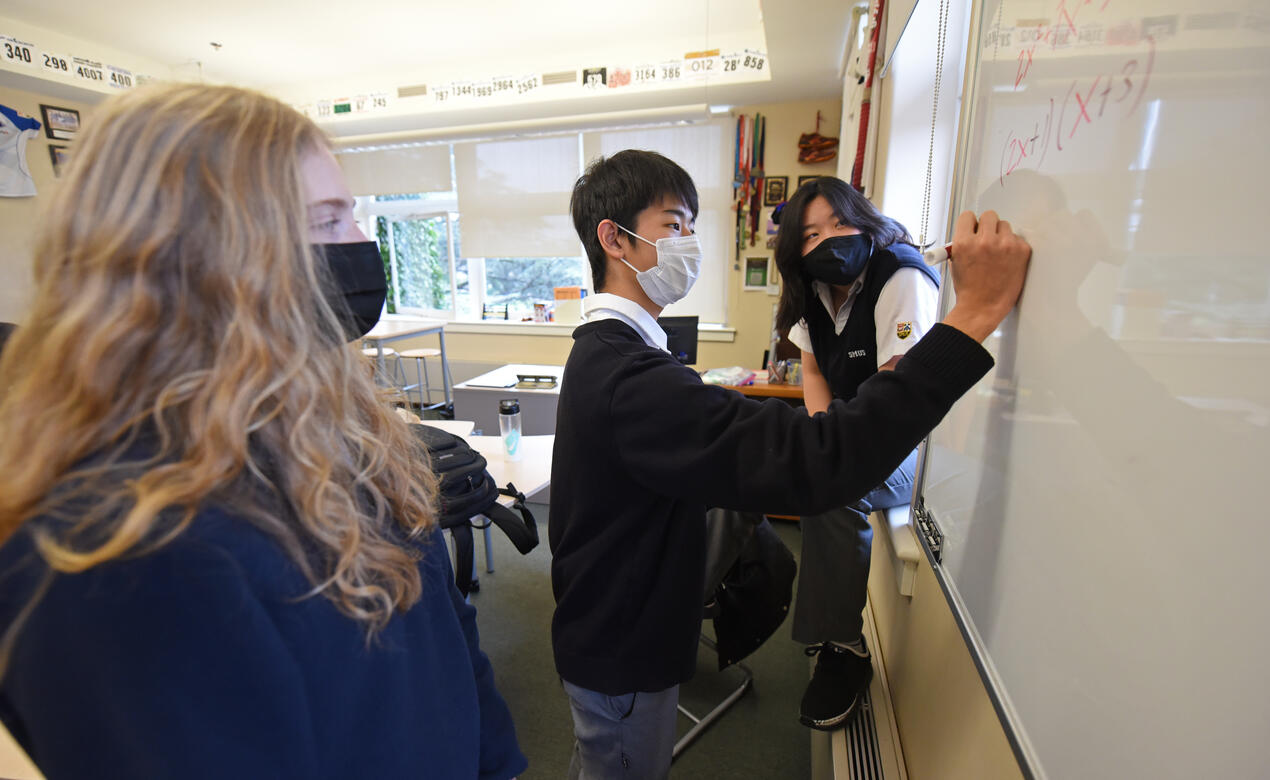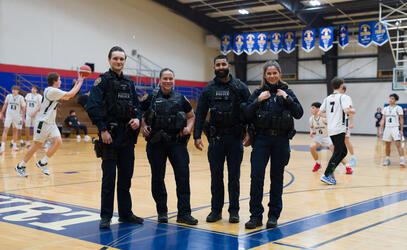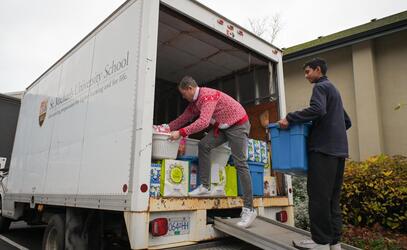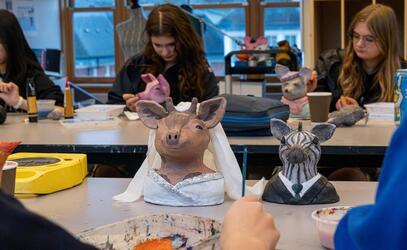
Here’s a math problem for you:
Decompose the number 25 using addition. For example,
25 = 10 + 15
25 = 10 + 10 + 5
25 = 3 + 3 + 3 + 16
Now, what is the biggest product you can make if you multiply the addends (components) together?
Source: Building Thinking Classrooms in Mathematics, Peter Liljedahl (adapted from a task by Malcolm Swan.)
Over the past three years, math teachers at our Middle and Senior Schools have been moving away from what would be considered a “traditional approach” to teaching math and are instead having students learn in a Thinking Classroom.
The Thinking Classroom is a dynamic approach to learning and teaching. Our mathematics teachers are using practices based on the research of SFU professor Dr. Peter Liljedahl to help students develop their ability to think mathematically and to build resilience and confidence with solving complex problems.
Senior School math teachers Mathew Geddes '93 and Scott Dawson answer some common parent questions about the Thinking Classroom and provide clarity on this exciting approach.
What is a Thinking Classroom?
A Thinking Classroom is an engaging learning environment where students work collaboratively to grapple with mathematical tasks that require both critical and creative thinking. For example, the math question above is a great problem for students to work together to solve.
How do you set up a Thinking Classroom?
Class starts by assigning visibly random groups of two or three. Ensuring students see that the groups are random is important to reduce social stress and barriers, increase engagement and enthusiasm, and to increase knowledge mobility. Students get up out of their seats and find a vertical whiteboard space to work at with their group. The teacher then presents an interesting mathematical problem, and students rely on their prior knowledge, and each other, to progress towards a solution.
Why are SMUS math courses moving to this approach?
Preparing students for life means developing competent thinkers that are resilient, collaborative, and strong communicators. The BC curriculum specifically identifies key competencies to develop in mathematics and the goal is for students to be able to explain and justify, reason and model, visualize, make connections, and more. The Thinking Classroom helps students to become sophisticated with a variety of habits, mindsets, and approaches, to gain the confidence to use them, and the resilience to persevere.
Why not stick with the traditional approach?
For many students, the traditional approach steers them towards memorization and mimicking, and can create a much less engaging classroom experience. Memorization is a dead-end strategy in mathematics that effectively creates a ceiling for learning. The Thinking Classroom inspires students to engage, spending the majority of class time actually thinking, and learning through doing. Problem-solving becomes a collaborative event that is fun, and students are challenged by tasks that are both easily accessible and rich with complexity.
How does the Thinking Classroom help students develop confidence in mathematical problem-solving?
Again, memorization and mimicking are the enemies here. Many students want to be told “how to do it” and they may not understand why they are following those steps or the mathematics behind the strategy. With this limited approach, it becomes difficult to apply or extend the procedure to a situation not seen before. Imagine learning a second language and trying to have a conversation when all you have are a few memorized phrases. It doesn’t work well.
Successful people are able to courageously problem solve, communicate effectively, and collaborate to work towards a solution. The Thinking Classroom provides a fun, safe environment to learn these skills and to become more comfortable taking chances. Students learn that not every strategy will work, and that is okay.
What does the Thinking Classroom look like when students are completing a task?
Students are having discussions and are displaying their thinking on the whiteboards. We hear them articulating their reasoning and their struggles to make sense of the problem at hand. There are “aha” moments every class when students connect ideas, see patterns and think of a new strategy to try. Often each group has a different style, approach or solution. It is powerful to highlight these perspectives and to show the value of different ways of thinking. It is also inspiring to see those who catch on quickly sharing and teaching their ideas to others. We also notice that students improve their explanations and reasoning throughout the year; there is no better way to solidify a concept than to explain it to someone else.
How do you get students on board with this type of learning?
We do this by getting students thinking every day, every class! We have found success by establishing norms early on. We start the year with group thinking tasks right away. We first focus on non-curricular thinking tasks to get students used to working together, introducing some basic problem-solving strategies and having them experience success through perseverance. They get used to this format quickly and are very enthusiastic once they realize they will not be sitting listening to a lecture. The example above is a great thinking task because it is very accessible, and students can include solutions that range from basic multiplication all the way to calculus.
In the Thinking Classroom, students are active in the learning process. Eventually, we segue into curricular tasks to connect course content to previous knowledge. By then, the students are used to collaborating and working with different people each day. They are excited to learn in this interactive way, and we see more confident and competent students. As teachers, we are alongside our students prompting and hinting as needed, and encouraging students to look around the room for ideas to keep them moving in the right direction.
After a series of thinking tasks, how do students consolidate their learning?
Students bring together the knowledge, strategies, and skills that they have learned into a framework that connects and enhances previous understandings. This happens throughout each class in a few different ways. If one group has an interesting solution, the class gathers around and we talk through the solution. Teachers always leave time at the end of class for students to reflect and record their learning in a way that they will remember and be able to use in the future. This could involve doing further reading, watching videos, writing notes, or doing independent practice.
Our ability to implement the Thinking Classroom at the Senior School has been generously supported by the SMUS Parents’ Auxiliary through the funding of flexible furniture in each classroom that allows for moving around and standing group work. Also, teachers from Middle School and Senior School have had the opportunity to use professional development funds and time to work with Dr. Liljedahl. We continue to learn and improve our practice to meet the needs of our students to prepare them for life.



